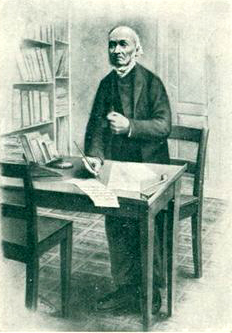|
Nynorsk
Nynorsk () () is one of the two written standards of the Norwegian language, the other being Bokmål. From 12 May 1885, it became the state-sanctioned version of Ivar Aasen's standard Norwegian language ( no, Landsmål) parallel to the Dano-Norwegian written language ('' Riksmål''). Nynorsk became the name in 1929, and it is after a series of reforms still a variation which is closer to , whereas Bokmål is closer to ''Riksmål'' and Danish. Between 10 and 15 percent of Norwegians (Primarily in the west around the city of Bergen,) have Nynorsk as their official language form, estimated by the number of students attending ''videregående skole'' (secondary education). Nynorsk is also taught as a mandatory subject in both high school and elementary school for all Norwegians who do not have it as their own language form. History Danish was the written language of Norway until 1814, and Danish with Norwegian intonation and pronunciation was on occasion spoken in the cities ( ... [...More Info...] [...Related Items...] OR: [Wikipedia] [Google] [Baidu] |
Norwegian Language
Norwegian ( no, norsk, links=no ) is a North Germanic language spoken mainly in Norway, where it is an official language. Along with Swedish and Danish, Norwegian forms a dialect continuum of more or less mutually intelligible local and regional varieties; some Norwegian and Swedish dialects, in particular, are very close. These Scandinavian languages, together with Faroese and Icelandic as well as some extinct languages, constitute the North Germanic languages. Faroese and Icelandic are not mutually intelligible with Norwegian in their spoken form because continental Scandinavian has diverged from them. While the two Germanic languages with the greatest numbers of speakers, English and German, have close similarities with Norwegian, neither is mutually intelligible with it. Norwegian is a descendant of Old Norse, the common language of the Germanic peoples living in Scandinavia during the Viking Age. Today there are two official forms of ''written'' Norwegian, (lite ... [...More Info...] [...Related Items...] OR: [Wikipedia] [Google] [Baidu] |
Ivar Aasen
Ivar Andreas Aasen (; 5 August 1813 – 23 September 1896) was a Norwegian philologist, lexicographer, playwright, and poet. He is best known for having assembled one of the two official written versions of the Norwegian language, Nynorsk, from various dialects. Background He was born as Iver Andreas Aasen at Åsen in Ørsta (then Ørsten), in the district of Sunnmøre, on the west coast of Norway. His father, a peasant with a small farm, Ivar Jonsson, died in 1826. The younger Ivar was brought up to farmwork, but he assiduously cultivated all his leisure in reading. An early interest of his was botany. When he was eighteen, he opened an elementary school in his native parish. In 1833 he entered the household of Hans Conrad Thoresen, the husband of the eminent writer Magdalene Thoresen, in Herøy (then Herø), and there he picked up the elements of Latin. Gradually, and by dint of infinite patience and concentration, the young peasant mastered many languages, and began the s ... [...More Info...] [...Related Items...] OR: [Wikipedia] [Google] [Baidu] |
Norway
Norway, officially the Kingdom of Norway, is a Nordic country in Northern Europe, the mainland territory of which comprises the western and northernmost portion of the Scandinavian Peninsula. The remote Arctic island of Jan Mayen and the archipelago of Svalbard also form part of Norway. Bouvet Island, located in the Subantarctic, is a dependency of Norway; it also lays claims to the Antarctic territories of Peter I Island and Queen Maud Land. The capital and largest city in Norway is Oslo. Norway has a total area of and had a population of 5,425,270 in January 2022. The country shares a long eastern border with Sweden at a length of . It is bordered by Finland and Russia to the northeast and the Skagerrak strait to the south, on the other side of which are Denmark and the United Kingdom. Norway has an extensive coastline, facing the North Atlantic Ocean and the Barents Sea. The maritime influence dominates Norway's climate, with mild lowland temperatures on the ... [...More Info...] [...Related Items...] OR: [Wikipedia] [Google] [Baidu] |
North Germanic Languages
The North Germanic languages make up one of the three branches of the Germanic languages—a sub-family of the Indo-European languages—along with the West Germanic languages and the extinct East Germanic languages. The language group is also referred to as the Nordic languages, a direct translation of the most common term used among Danish, Faroese, Icelandic, Elfdalian, Norwegian, Gutnish, and Swedish scholars and people. The term ''North Germanic languages'' is used in comparative linguistics, whereas the term Scandinavian languages appears in studies of the modern standard languages and the dialect continuum of Scandinavia. Danish, Norwegian and Swedish are close enough to form a strong mutual intelligibility where cross-border communication in native languages is very common. Approximately 20 million people in the Nordic countries speak a Scandinavian language as their native language,Holmberg, Anders and Christer Platzack (2005). "The Scandinavian lang ... [...More Info...] [...Related Items...] OR: [Wikipedia] [Google] [Baidu] |
West Scandinavian Languages
The North Germanic languages make up one of the three branches of the Germanic languages—a sub-family of the Indo-European languages—along with the West Germanic languages and the extinct East Germanic languages. The language group is also referred to as the Nordic languages, a direct translation of the most common term used among Danish, Faroese, Icelandic,Elfdalian, Norwegian, Gutnish, and Swedish scholars and people. The term ''North Germanic languages'' is used in comparative linguistics, whereas the term Scandinavian languages appears in studies of the modern standard languages and the dialect continuum of Scandinavia. Danish, Norwegian and Swedish are close enough to form a strong mutual intelligibility where cross-border communication in native languages is very common. Approximately 20 million people in the Nordic countries speak a Scandinavian language as their native language,Holmberg, Anders and Christer Platzack (2005). "The Scandinavian languages ... [...More Info...] [...Related Items...] OR: [Wikipedia] [Google] [Baidu] |

